The biggest mass extinction event on Earth occurred at the end of the Permian period, resulting in the extinction of 95% of marine life and 80% of terrestrial life. Now, scientists have found that the terrestrial portion of the event lasted nearly ten times as long as the ocean version. Plus, a spaghettified star, the search for Moon Trees, all about Mars, and new works on dark matter and dark energy.
Media
Transcript
Hello and welcome to the Daily Space. I am your host Dr. Pamela Gay.
And I am your host Beth Johnson.
And we are here to put science in your brain.
As much as we wish that our space and astronomy news was nothing but goodness and light and the occasional past mass extinction we finally understand, the Earth is a planet, and sometimes this planet needs to be studied the same way we study other worlds. And sometimes, we’re going to get answers we don’t exactly like.
Currently, we’re moving into a fire season for the North American west coast that is like nothing we have ever seen before. As we’ve discussed previously on this show, the land is drier, and the foliage is worse off than has been seen before. Any random spark from a car, dropped ash from a cigarette, or misbegotten firework could set everything ablaze.
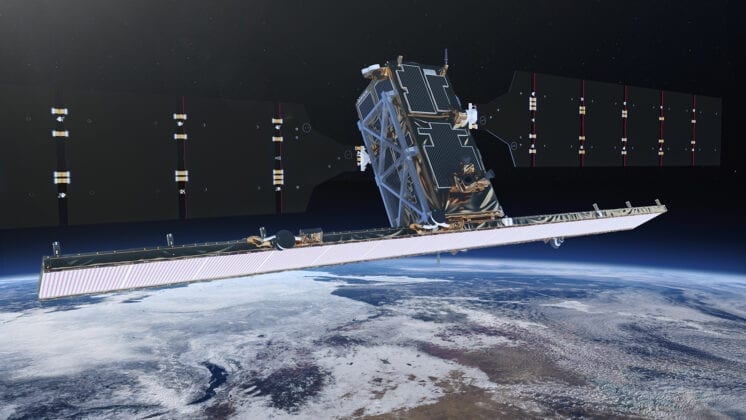
Until recently, watching for fires was the job of infrared satellites, people in fire watch stations, other eyes on the ground, and picture taking images in the sky. Unfortunately, clouds can get in the way of all these methods. This includes thunderstorms with fire triggering lightning as well as smoke-associated fires. As we discussed last week, there is one technique for looking through clouds: radar. Specifically, Synthetic Aperture Radar (SAR) allows orbiting satellites to map the surface of our world in amazing detail, even through clouds.
In new research led by Amy Parker and published in Remote Sensing, researchers show that these precise surface measurements can be used to see moving fire and other problems. Parker puts it this way: SAR data can be used to precisely map topography, track movements of the ground surface, characterize land-use change, and map damage to infrastructure, all of which can significantly improve how we track and respond to natural disasters.
While Synthetic Aperature Radar isn’t a new technology, it hasn’t been cheap enough for broad use until now. Parker adds: Previously SAR data has been considered too expensive to use as a tool for hazard mitigation, but our findings show, through Sentinel-1 we now have economically viable wall-to-wall, consistent sensor imaging of Australia. The uptake of SAR data for hazard applications globally will continue to benefit from validated case studies such as ours, the development of tools that support operational use, and the continued provision of open-access imagery by large-scale satellite missions.
As much as I hate that this research was successful because there were natural detectors to test this system, I think all of us can be grateful that the system is here now to help peer through the clouds to see what dangers may be coming.

After a story like that, I’m happy to say there is goodness and light out there to share. Or at least trees that experienced the Moon.
Back in 1971, the Apollo 14 mission traveled to the Moon with two golf balls and 500 seeds. While the golf balls were sent toward the horizon by Alan Shepherd, the seeds were brought back to Earth by Stuart Roosa, who’d been a paratrooper firefighter before he became an astronaut. These seeds included redwood, loblolly pine (Pinus taeda), American sycamore (Platanus occidentalis), Douglas fir (Pseudotsuga menziesii), and American sweetgum (Liquidambar styraciflua) trees. While these seeds were only in space for nine days, there is still interest in seeing how they may or may not have grown any different from other trees.
While many of the seeds were planted and grew into well-documented trees, fifteen British trees are living more anonymous lives. The Royal Astronomical Society and the UK Space Agency are now on a quest to find those trees. We’re going to link to more information on our website, DailySpace.org, and if you just happen to have an old family story about a Moon tree being planted, there are some good folks who’d like to know more, for science.
From space science, we now turn to spaghetti science. Or rather spaghettification.
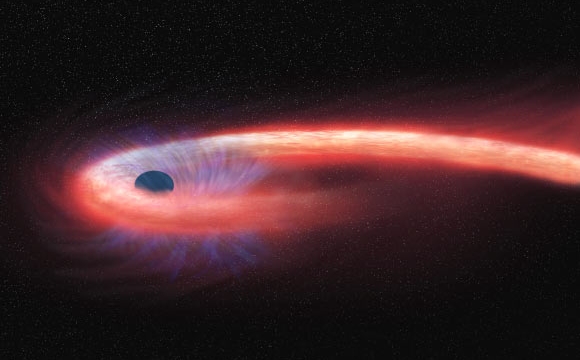
In the vicinity of black holes, the gravitational pull on an object changes so much from point to point that anything that can get too close will be stretched and stretched and stretched until it becomes essentially a noodle of atoms. A person could get stretched to 70 light-years of noodly former human.
While it isn’t too hard to imagine a black hole stretching a person, black holes can also do this to stars. In new research published in the Monthly Notices of the Royal Astronomical Society (MNRAS), researchers led by Giacomo Cannizzaro show evidence for a black hole caught in the act of spaghettifing a star. While the flashes of light a star gives off while making its final dive into a black hole have been seen many times, for the first time, the absorption lines of a spaghettified star have been spotted. Literally, the gaps in the light from where the star’s atoms absorb light were seen in observations from multiple telescopes looking in different parts of the electromagnetic spectrum. According to the press release: …absorption lines above a black hole’s pole suggest there is a long strand wrapped many times all around the black hole, like a yarn ball: the actual material ligament from a freshly torn star.
As a knitter, I want to say, “Challenge accepted.” Unfortunately, this yarn winding of star stuff is in a pretty distant galaxy, so I guess I’m going to need to stick to wool for now.
Over 250 million years ago, the worst mass extinction in the history of our planet occurred. The end-Permian event, or the Permian-Triassic extinction event, wiped out nearly all of the marine life on Earth as well as about 80% of the terrestrial life. Now, new research published in the Proceedings of the National Academy of Sciences provides evidence that the duration of the event itself took ten times longer for the land animals than the ocean life.
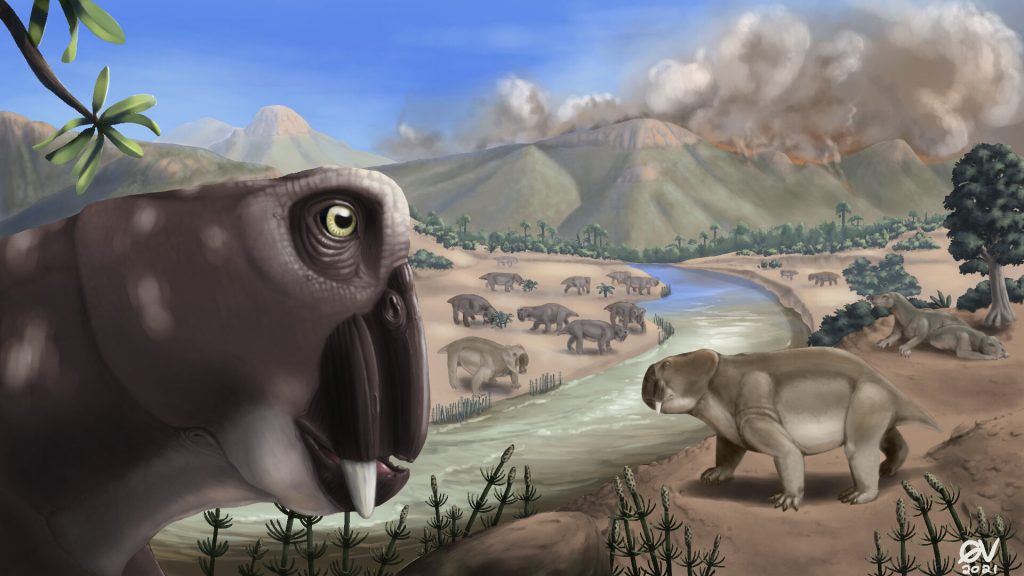
What this means is that the marine version of the extinction took place over 100,000 years while the land version lasted more than one million years. Since those numbers are really too big to comprehend, the press release helpfully shares that if you consider the 3.8 billion years of life on Earth as one year, the marine extinction took only 14 minutes. The terrestrial version, on the other hand, lasted about two hours and twenty minutes.
First, let’s look at the cause of the event itself. It’s another “climate change can be really awful” scenario where, in this case, massive volcanic eruptions in a region known as the Siberian traps vastly increased the amount of carbon dioxide in the air. This increase led to global warming, and that pulled the oxygen out of the water as it evaporated into the atmosphere. No oxygen, no animals. Yikes.
Now, if you want to understand an extinction event, the best place to look is the fossil record. And the best fossil records are in sedimentary rocks because, well, magma destroys all the evidence, and the increased pressure and temps of metamorphism both distorts and destroys. So sedimentary rock it is. And the best sedimentary rock for fossil hunting is one that has been underwater. Want to become a fossil? Make sure you expire near a body of water so that you can get rapidly covered in sediment and preserved. Unfortunately, that means that a lot of the fossil record comes from marine life that is already in the water.
This means that up until now, most of what we knew about the Permian-Triassic extinction came from marine fossils. So a research team decided to specifically focus on finding land animals in the fossil record and analyze what happened to them. They went fossil hunting in South Africa’s Karoo Basin, and found almost 600 four-legged fossil animals! From there, they created a database, separated the fossil by age, and grouped the specimens into 300,000-year chunks. After all, they weren’t looking for the fine details of the fossil record; they wanted the overall picture.
After much statistical analysis, the team could map out the disappearance of various creatures over this longer time period, but they cannot explain exactly why the extinction event took so much more time on land than in water. Pia Viglietti, a postdoctoral researcher at Chicago’s Field Museum and the lead author of the study, notes: The changes to the Earth’s climate were cumulative and added up over time. Ecosystems were slowly disrupted, and then it just got to a point where everything collapsed, like the straw that breaks the camel’s back. Everything’s fine until it’s not.
It should be noted that this extinction, while incredibly devastating to life on Earth, also paved the way for the rise of the dinosaurs, whose eventual extinction due to meteor paved the way for the rise of mammals.
A couple of weeks ago, we talked about the Mars InSight lander and its SEIS seismometer, which has been detecting marsquakes by the bucketload. New data released shows that in this first year of continuous operation, over 500 marsquakes have been detected. The red planet is rocking and rolling, y’all.
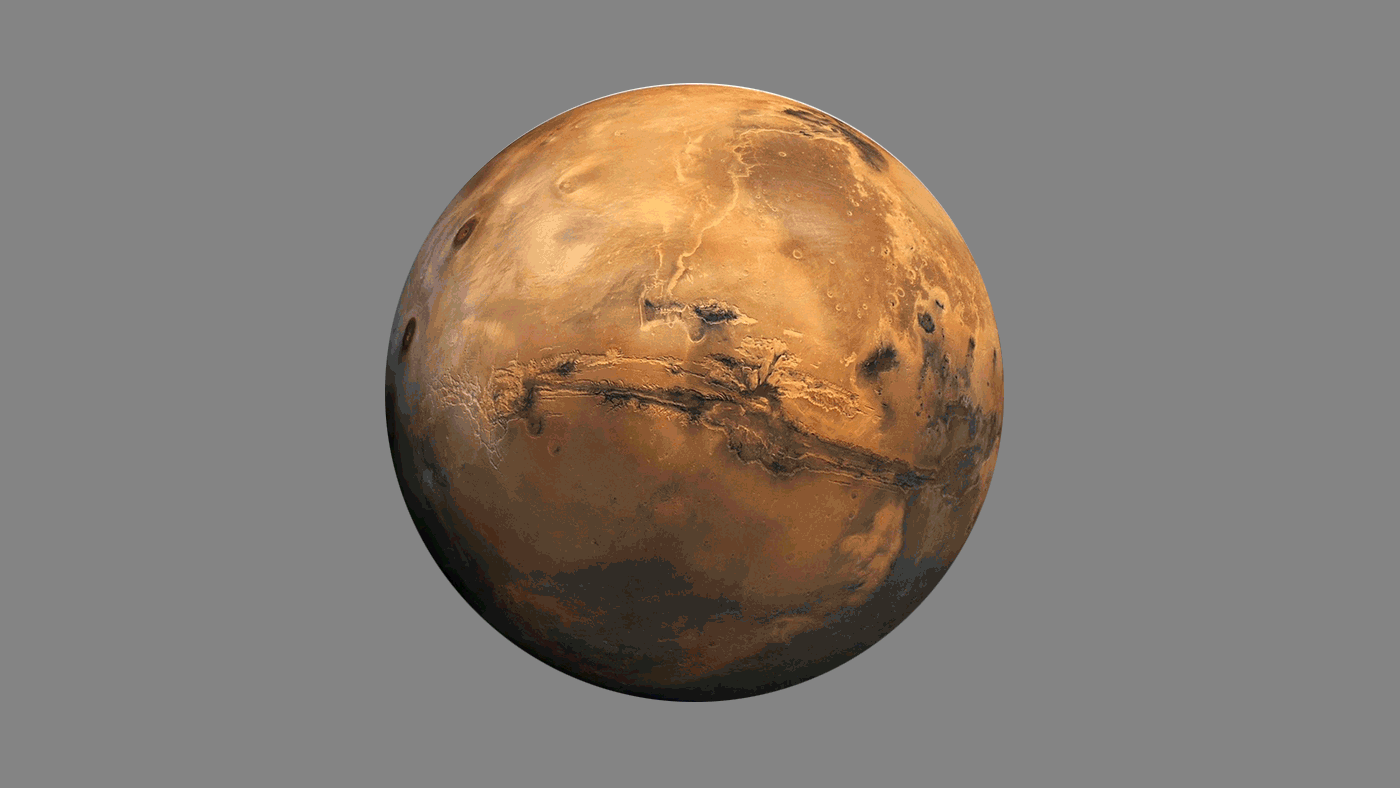
Remember, these quakes are much smaller than most of what we feel on Earth, with the largest reaching a magnitude of 3.6. These smaller quakes are easier to detect on Mars, too, because there are no ocean waves and very little wind to interfere with the sensor, although SEIS does have a cover to block out the wind noise. There are low-frequency events that resemble our own earthquakes, fading away relatively quickly, and there are higher frequency waves that persist for longer periods of time and resemble what we know of moonquakes.
Overall, a handful of the larger quakes appear to be coming from the region of Cerberus Fossae, which is a younger geologic structure, and could be extending, or pulling apart, similar to how the Basin and Range region is extending in the western United States. We need more data, though, so go InSight!
Of course, while marsquakes are cool, everyone these days seems to be interested in whether or not Mars has had life or even still has life. Scientists are continuing to analyze the geology and layering of Mount Sharp, and this week, a new paper published in JGR Planets reveals that the Stimson formation contains evidence of an ancient dune field. This layer is over other layers that we know were deposited in a large lake, and knowing how it was formed means that scientists can now work toward understanding the wind conditions of that particular era of Martian history.

Last time we talked about the Murray formation, which has been shown to have a back and forth climate pattern that goes between wet and dry several times. Now we’ve layered a very dry, very windy, very dusty climate over the top of that formation. It may have taken a while for Mars’ water to disappear, either into the atmosphere or underground into minerals, but when it left, it really affected the surface. If life was there, it either died out 3.5 billion years ago, or it went underground.
And another new study, this one in the journal Astrobiology, lays out the evidence for the possibility of subsurface life. This study examined the chemical composition of Martian meteorites that we have found here on Earth. Yay for free rock samples! These rocks could be representative of different parts of Mars’ crust. Per the press release: The analysis determined that those rocks, if in consistent contact with water, would produce the chemical energy needed to support microbial communities similar to those that survive in the unlit depths of the Earth.
This follows a story we covered a couple of weeks ago that showed that biofilms and other life have been found deep underground in an old gold mine, and that life is surviving without access to sunlight or oxygen. The same could hold true for Mars, giving us another avenue for finding current life on the red planet.
One of the things that deeply amuses me about NASA is they have a handful of science divisions: there is Planetary Science, Earth Science, Helioscience, Biological and Physical Sciences, and everything else gets lumped in under Astrophysics. Put another way, the vast majority of the universe is outside our solar system, and it is all lumped together in one of five science divisions.
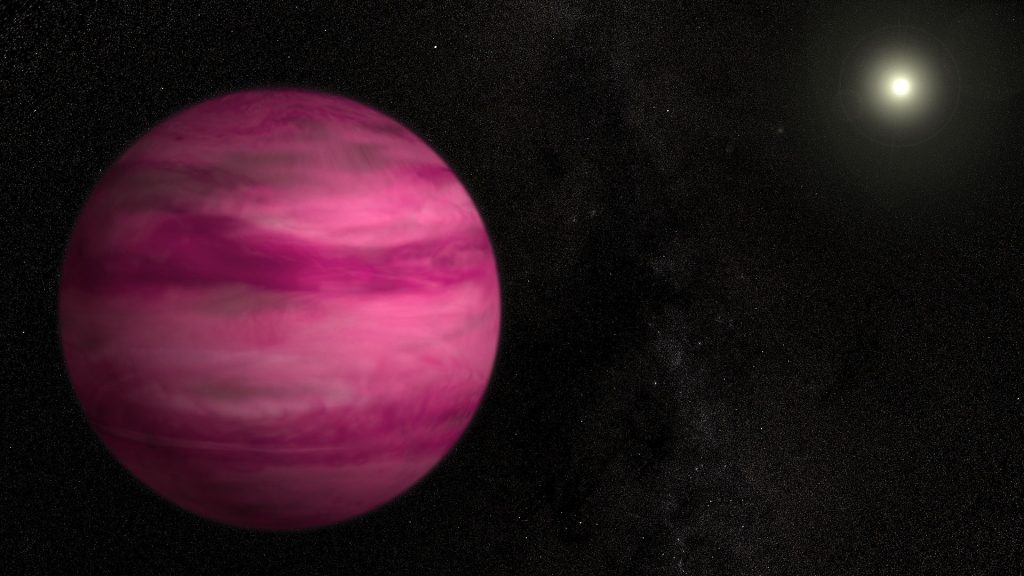
This tendency to spend a lot of our energy observing what is near and bright is a pretty common habit for us humans. As a whole, the universe has three major components: there is the stuff that makes up us and every single thing we feel and touch inside the universe; this is called baryonic matter. There is also dark matter that we trace through its gravitational pulls on light and matter. And in 1998, we learned there is a third something out there: a mysterious thing that is accelerating the expansion of the universe. We don’t know what it is, but we named it dark energy. Mind you, it might not actually be a form of energy; that’s just the placeholder name. We could have just as easily named it Fred, but that would have been less interesting.
We can’t see dark matter or dark energy except through how they pull and push on everything around them. Nevertheless, 68% of the universe is dark energy, while 27% is dark matter, and less than a measly 5% is regular stuff.
It is super annoying to not be able to identify 95% of the stuff in the universe, and annoyance can lead to creativity.
Filed under things I never expected to read, super creative cosmologists have figured out a possible way to use exoplanets to find and map the distribution of dark matter in our galaxy. As weird as that sounds, their logic is pretty straightforward, and while the required observations are super hard, hard doesn’t mean impossible.
Here is how it works: the more matter you cram into a space, the higher the temperature will be. Planets have mass, and their gravity is capable of drawing in more matter, including dark matter. Since dark matter particles are super small and generally don’t interact with anything, it is possible for dark matter to sink into the centers of worlds and just hang out there, not doing much beyond driving up temperatures.
In this work, which is published in Physical Review Letters by Rebecca Leane and Juri Smirnov, it’s predicted that all other things being equal, planets in regions of the galaxy with more dark matter will pull more dark matter into their core and be warmer, and planets in volumes of the galaxy with less dark matter will be cooler. The catch is the “all things being equal” part.
The temperatures of planets vary with distance from their star, their interactions with other objects, their age, their composition, and a whole lot more. To keep things simple, they propose looking at gas giants, rogue planets, and even those borderline objects – brown dwarfs. If these objects are harboring dark matter, there should be an observable change in temperature from place to place. In the core of the galaxy, where we expect more dark matter, things should be hotter, while things further outwards should be cooler.
Unfortunately, this only works for the smallest theorized forms of dark matter, but it is better than nothing.
Also, unfortunately, this particular theory can’t be tested until the JWST is launched and working, and they can get a significant amount of observing time on it, so we can’t know this answer for a while. This is a reminder that studying astronomy is a long game with years and years sometimes passing from idea to observation to a new understanding of our universe.
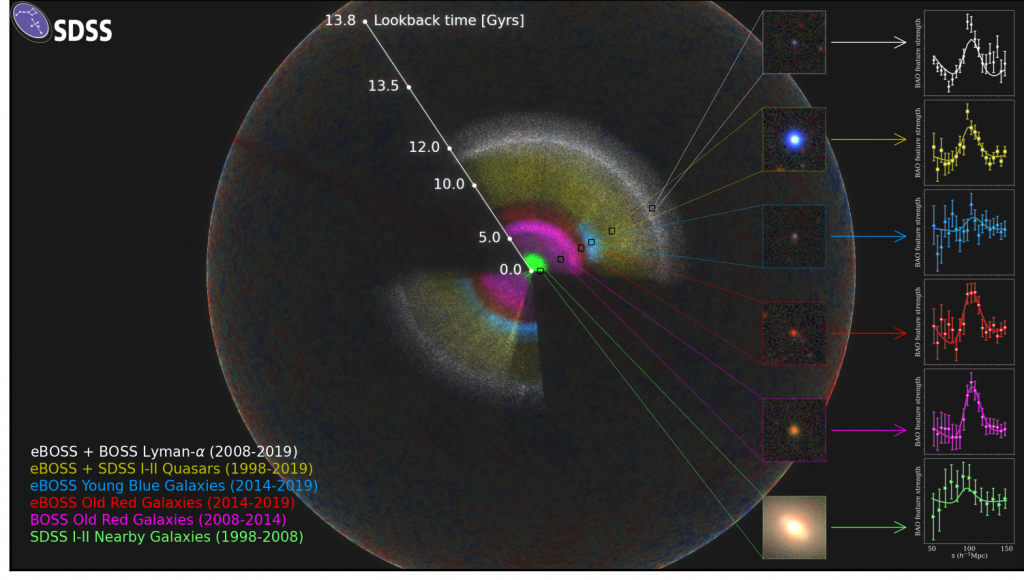
Luckily, for every project we are waiting on, there is often another project that is coming to fruition. While we wait to learn more about dark matter, another team on the other side of the world is bringing us an update on dark energy. New research published in MNRAS and led by Zhao Gongbo and Wang Yuting presents an analysis of galaxies and structure growth over a previously not-so-well-studied region of space, ranging from 0.7 to 1.8 billion light-years away. By looking at myriad galaxies of different types and sizes, they were able to measure the changing expansion rate of the galaxy in new ways. New ways that confirmed, yes, our universe is accelerating apart and they confirmed this result with super high accuracy.
This gives us one more “really can’t be ignored and really can’t be denied” piece of evidence that our universe is dominated by a completely not understood something we have named dark energy. While it’s frustrating to know so little, knowing something exists is actually the first step in understanding something.
Science isn’t always satisfying, but it’s rarely boring, and we’ll be back tomorrow to once again bring you all that is new in space and astronomy.
This has been the Daily Space.
Learn More
Using Radar Satellites to Combat Bushfires and Floods
- Curtin University press release
- “Applications of Satellite Radar Imagery for Hazard Monitoring: Insights from Australia,” Amy L. Parker et al., 2021 April 7, Remote Sensing
The Search for Moon Trees
- RAS press release
Finding Hints of the Silhouette of a Spaghettified Star
- SRON press release
- “Accretion disc cooling and narrow absorption lines in the tidal disruption event AT 2019dsg,” G Cannizzaro et al., 2021 March 24, Monthly Notices of the Royal Astronomical Society
Permian-Triassic Mass Extinction Lasted Far Longer on Land Than in Oceans
- Field Museum press release
- “Evidence from South Africa for a protracted end-Permian extinction on land,” Pia A. Viglietti et al., 2021 April 27, PNAS
The Surprising First Year of SEIS Observations from NASA’s InSight
- Seismological Society of America press release
Ancient Martian Dune Fields Show Changing Habitability
- Imperial College London press release
- “A Rock Record of Complex Aeolian Bedforms in a Hesperian Desert Landscape: The Stimson Formation as Exposed in the Murray Buttes, Gale Crater, Mars,” Steven G. Banham et al., 2021 March 30, JGR Planets
Mars Could Currently Have Microbial Life Beneath Surface
- Brown University press release
- “Earth-like Habitable Environments in the Subsurface of Mars,” J.D. Tarnas et al., 2021 April 15, Astrobiology
How to Use Exoplanets to Detect Dark Matter
- The Ohio State University press release
- “Exoplanets as Sub-GeV Dark Matter Detectors,” Rebecca K. Leane and Juri Smirnov, 2021 April 22, Physical Review Letters
Furthering Our Understanding of Dark Energy
- NAOC press release
- “The completed SDSS-IV extended Baryon Oscillation Spectroscopic Survey: a multitracer analysis in Fourier space for measuring the cosmic structure growth and expansion rate,” Gong-Bo Zhao et al., 2021 March 24, Monthly Notices of the Royal Astronomical Society
Credits
Written by Pamela Gay and Beth Johnson
Hosted by Pamela Gay and Beth Johnson
Audio and Video Editing by Ally Pelphrey
Content Editing by Beth Johnson
Intro and Outro music by Kevin MacLeod, https://incompetech.com/music/


 We record most shows live, on Twitch. Follow us today to get alerts when we go live.
We record most shows live, on Twitch. Follow us today to get alerts when we go live.